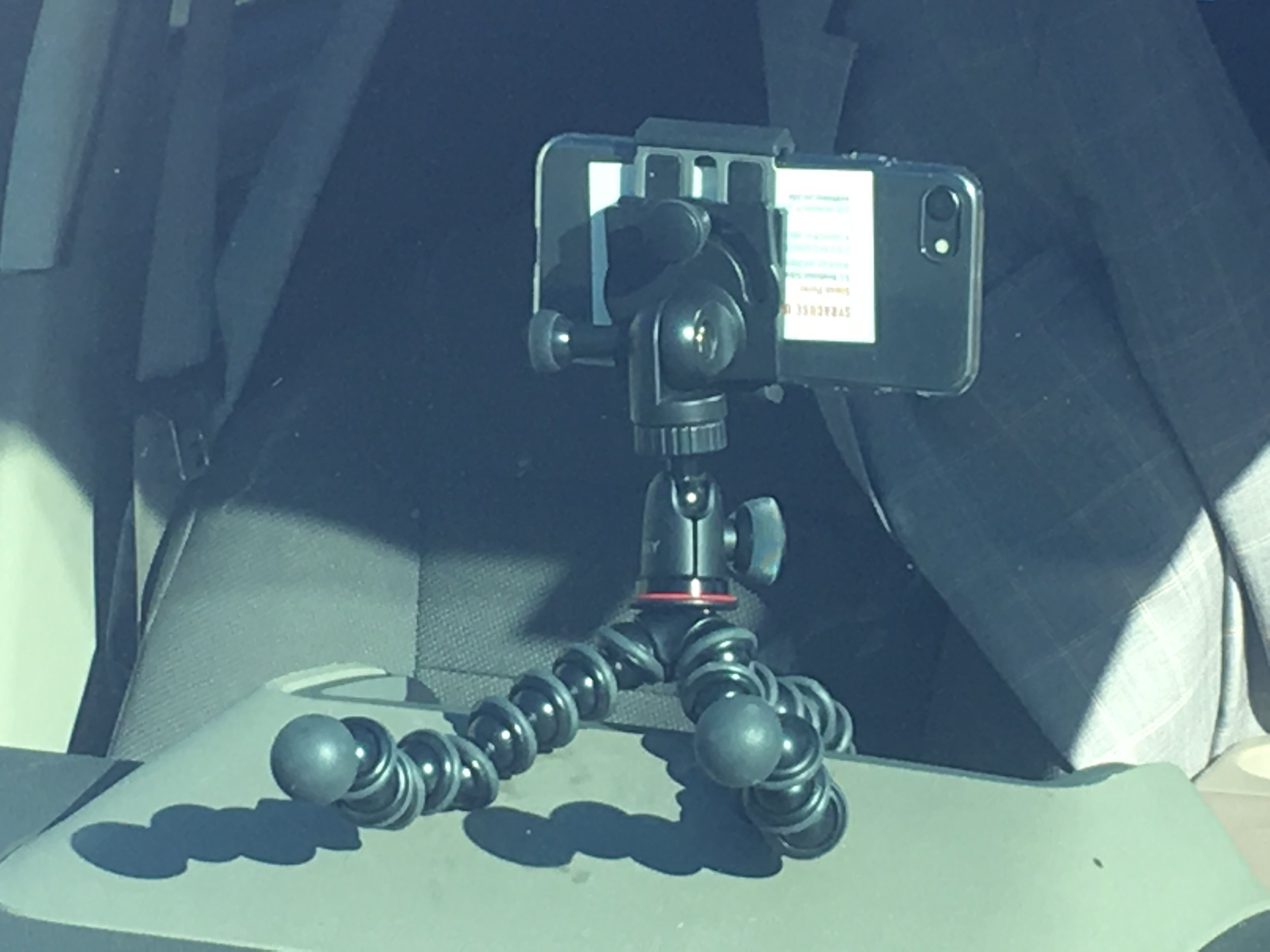Not just where you are, but why you are where you are
Going live is a key part of broadcast journalism. It adds urgency, proves the reporter was really there gathering information and can be a powerful storytelling tool. One way to make sure your live shots connect with the viewers is to relate to your background. Beginning reporters often make the mistake of merely saying where they are in the live shot. "I'm here in front of City Hall." Instead, they should tell the viewers why they are where they are in the live shot. Sometimes that's easier said than done.
Today my story was about a shortcut many commuters take to avoid traffic getting onto the freeway (that's Californian for highway) in Fremont. That shortcut is through a neighborhood along a one-lane road so the city wants to shut it down. Originally, my idea for my live introduction to my story was going to be referencing the interstate in the background, saying "this is where the people taking the shortcut want to go." That would explain why I'm there. But, because of safety reasons, we couldn't have the interstate as a background. All I had was a speed limit sign. Good enough. I adjusted the intro to match the different elements behind me. The point here is for beginning reporters to recognize relating to the background is essential for a good live shot. The circumstances, to a certain extent, determine what you're going to say.
Here's the original live shot with the interstate in the background:
“Just around that corner is the on ramp to interstate 680 on the west side of Fremont. The direct route is down often crowded Mission Boulevard... so some commuters instead come up through the canyon and down this hill. This road wasn’t made for that.... so the city of Fremont is thinking about shutting it down.”
Here's the live shot that actually happened with the sign in the background:
“We did go for a ride. We drove Morrison Canyon Road and found there are some spots that are really narrow and difficult to navigate. But that’s not the only danger. The city of Fremont says about 80 percent of the people who drive this road go at least 10 miles an hour over the speed limit, which you can see is just 25. So the solution - close it down.”
Television is different form other forms of media in that it can better take the viewer to the scene of what's happening. Reporters should try to exploit that advantage every time they can. In this story the best way to explain why the city wanted to shut down the road was to take the viewer there - with the dash cam. I didn't have a permanent dash cam installed in my vehicle like law enforcement officers do, so I fixed one up myself with my phone, a flexible Joby tripod and a Joby cell phone harness. What you don't want to do is drive narrow, winding roads holding your cellphone as you go. So this admittedly rudimentary set up is a good, safer alternative.
The drive was about 10 minutes of video, far too long for a 90-second story. But, with the magic of non-linear editing, you can give the viewers a pretty good sense of what it's like to drive on that very road. Check it out in the story below.
Reporters have (probably deservedly) earned the reputation of being pushy. But it's not because we're trying to be jerks, it's because we're trying to make deadline. Often, beginning reporters forget an important rule: always ask for what you want. The worst that can happen is the interview subject says "no." So, yes, push to make sure the interview happens closer to you and sooner rather than later. In today's story, I was communicating with a member of the Fremont City Council and had to push to get the interview sooner and closer. If it's not possible, then it's not possible. But if pushing helps you make deadline, then do it politely.
In the end, Councilman Raj Salwan showed up just as he said he would - 3:45 p.m. and I was able to complete the interview and head back to the live shot location with 15 more minutes to edit before deadline.
One of the great things about TV reporting is you never know what you're going to find while you're out on the story.
Takeaways:
- In a live shot, always relate to the background. Don't just say where you are, say why you are where you are.
- Take the viewer to the story.
- Simple equipment can make a big difference.
- Get what you want when you need it.




